#Grey Junglefowl
Explore tagged Tumblr posts
Text

Grey Junglefowl (Gallus sonneratii), male, family Phasianidae, order Galliformes, Kerala, India
photograph by Vyankatesh S Metan
475 notes
·
View notes
Note
If you were designing the chicken variants, what chickens would you pick?
personally, i would pick salmon faverolles for the cold variant because i'm deeply biased. i own them, i adore them, they're hands down my favorite breed of chicken. and overall they're good in the cold because they're large bodied with a small comb and wattles.
but also they're not common so i'd probably pick any variant of brahmas. i'd go with buff because the tan isn't a color we have a lot of in the cold areas. plus with a bit of black it'd look nice.
for the warm variant, i really do like the fayoumi because the light grey and white would look nice in the desert areas and it's a very nice breed that's good for hotter climates. you could also do junglefowl as well which wouldn't be a bad choice!
16 notes
·
View notes
Text

Grey Junglefowl (Gallus sonneratii)
.
~ Photo by Pritam Xavian Sadhukhan
~ The grey junglefowl, also known as Sonnerat's junglefowl, is one of the wild ancestors of the domestic chicken together with the red junglefowl and other junglefowls.
135 notes
·
View notes
Text
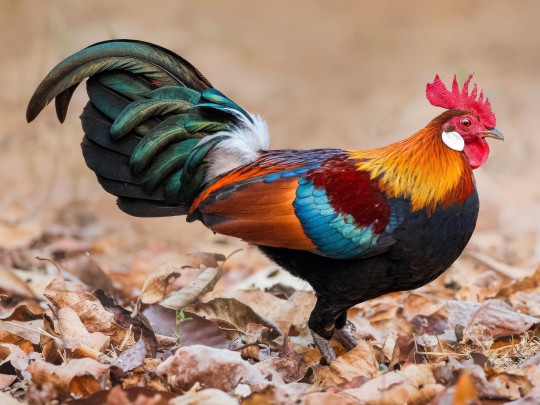



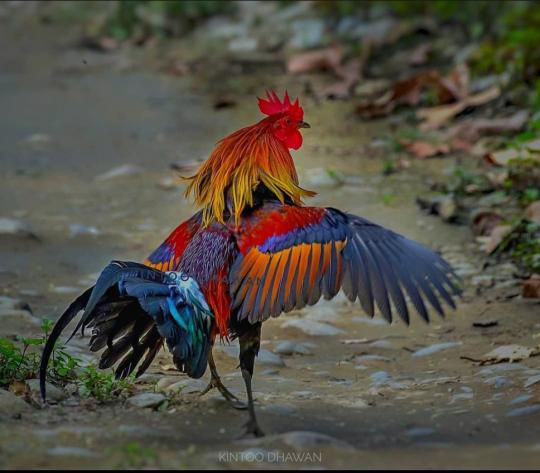
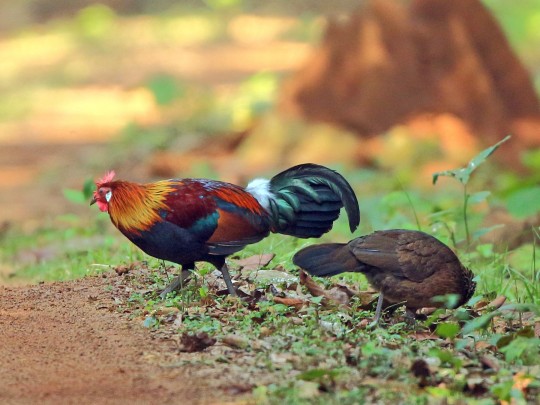
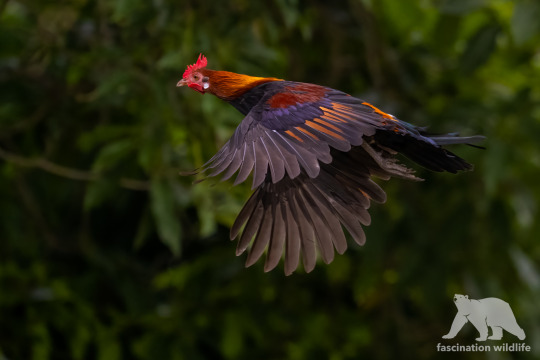
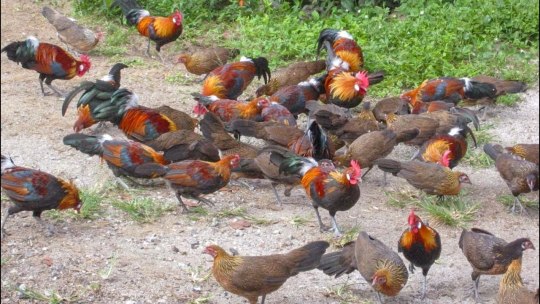
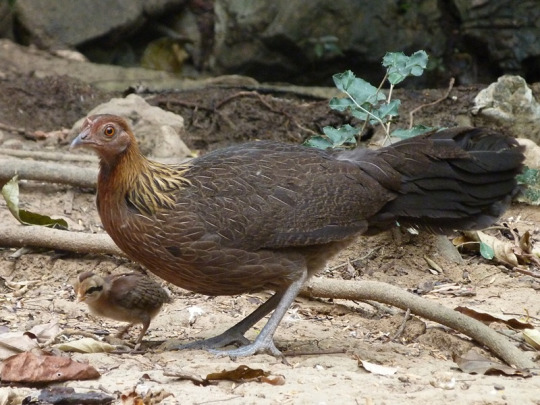

Gallus gallus better known as the red jungle fowl, the bankiva, the wild chicken, or the bankiva fowl, is a species of tropical bird in the family Phasianidae which is native throughout much of south east asia from India, Nepal and Bangladesh in the west, and eastwards across southern China, to Indochina; south/southeast into Malaysia, Singapore, the Philippines, and Indonesia. Red junglefowl are also the primary wild ancestor of the various breeds of domestic chickens, with humans first keeping and domesticating these birds some 8,0000 years ago. As such like its domestic descendants, was brought with and introduced to various regions across the world most notably Micronesia, Melanesia, Australia, and Polynesia. Here they inhabit all range of forests and woodlands as well as plantations, orchards, and agricultural areas. They live in flocks consisting of a few roosters and several hens and there offspring, often lead by a dominant male who maintains a small territory often centered around ideal roosting spots. They feed upon fruit, seeds, insects and other invertebrates, grains, leaves, stems, bamboo, grasses, roots, tubers, and the occasional small rodent or lizard. Jungle fowl are in turn eaten by a plethora or predators including various cats, civets, canines, primates, hyenas, lizards, snakes, crocodilians, coconut crabs, bears, marsupials, and predatory birds. Female red jungle fowl typically reach around 2.25lbs (1kg) in weight and 17 inches (43.2 cms) in length, while males can get to about 3.25 (1.5kg) in weight and 30 inches (76.2cms) in length. The males coloration is a vibrant mix of orange, brown, red, gold, grey, white, olive and even metallic green feathers. In contrast females are typically much more muted in plumage. Males also sport a long tall and larger combs and wattles than females. Flight in these birds is almost purely confined to reaching their roosting areas at sunset in trees or any other high and relatively safe places free from ground predators, and for escape from immediate danger through the day. Breeding occurs in the dry season, during which time males impress females by performing a display called "tidbitting" in which they dance, call, bobble, and brings the female food. After mating the female will lay an egg a day, for up to 12 days, and incubate them for 21 days until hatching. The young fledge at around 5 weeks of age, and at 12 weeks they are forced out of there mothers flock and must set off to join another or form there own. Under ideal conditions a red jungle fowl will reach sexual maturity at around 5 months of age and may live up to 30 years.
#pleistocene pride#pleistocene#pliestocene pride#pliestocene#cenozoic#ice age#stone age#dinosaur#bird#red#jungle#fowl#red junglefowl#junglefowl#chicken#asia#polynesian
19 notes
·
View notes
Text
Domestic Chicken / Red Junglefowl (Gallus gallus)
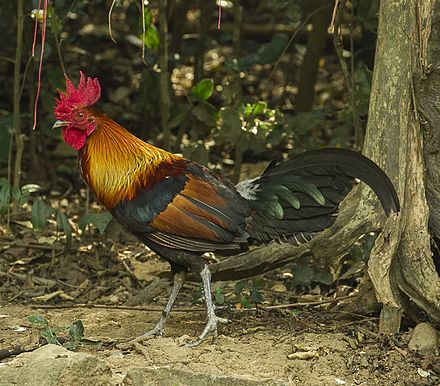
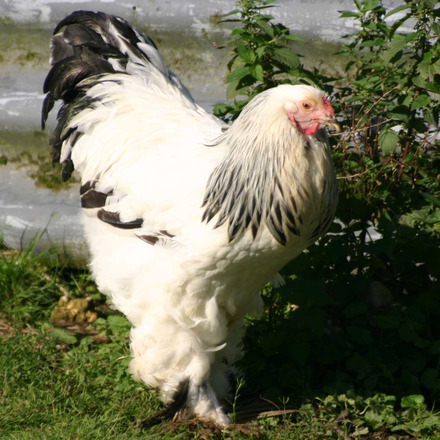
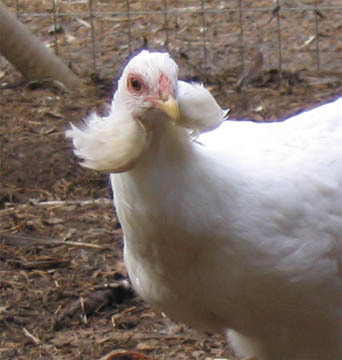
"He’s a dinosaur" (about Brahma Chicken) "My favorite chicken! We had a bunch of them when I was little and they were so smart and funny and fast and a bit territorial with smaller animals but it was so funny" (about Araucana Chicken) "Chickens descended from junglefowl, but they're pretty neat birds also."
I was really wondering when a second chicken was going to be added to the submissions, and was seriously considering having Araucana's showcased on behalf of all chickens. I owned Ameraucana chickens as a kid and they're a 'child' breed of Aracauna.
Aracauna Facts: these chickens often display either "ear muffs" or are rumpless and lay green eggs! Its not often than both muffed and rumpless birds exist, as both traits are caused by 'autosomal dominant lethal alleles'. This is one reason why Ameraucana were bred, as a way to keep the blue-green of the eggs while trying to breed out the lethal genes.
Brahma Facts: the Brahma is a powerhouse of a chicken. Between 1850-1930s, they were known as the top meat chicken in the country. They made great farmhouse birds, as the males remain tender for much longer than other chickens (up to a year, rather than 6-8 months) and the eggs were laid quite large at about 200 a year. They are also fairly cold resistant due to their feather quality and small combs, though their leg feathers can hold mud and moisture and lead to frostbite if their living quarters arent kept dry.
Red Junglefowl Facts: while this is the species that have rise to our domestic chicken, the grey junglefowl, Sri Lankan junglefowl and green junglefowl have also contributed genetic material to the gene pool. Genetic evidence suggests chickens were domesticated between 7,400-8,000 years ago!
Sources:
#in memoriam (joke)#araucana chicken#araucana#brahma chicken#brahma#red junglefowl#gallus gallus#phasianidae
28 notes
·
View notes
Text
About Sunderbans National Park
Information About Sunderbans National Park, India
Covering an expanse of approximately 10,000 square kilometers, the Sundarbans forest spans across both India and Bangladesh. India claims around 4,262 square kilometers of this natural marvel, while the rest falls within Bangladesh's territory. Sundarbans National Park occupies the Indian portion, renowned globally for hosting the largest mangrove forest on the planet. This national park is a haven for nature enthusiasts and wildlife aficionados alike. With its thick mangrove cover, intricate network of river channels, picturesque estuaries, and a thriving population of Royal Bengal Tigers and various other wildlife species, the Sundarbans offers a captivating landscape that beckons visitors from far and wide. Recognized as a UNESCO World Heritage Site, the park possesses a unique allure that draws tourists seeking unparalleled natural beauty and biodiversity experiences.
Located at the southeastern edge of the 24 Paraganas district in West Bengal, India, the Sundarbans National Park derives its name from the Sundari mangrove plant (Heritiera Minor). Situated within the world's largest delta formed by the Ganges, Brahmaputra, and Meghna rivers, this national park covers an expansive area of approximately 2585 square kilometers, making it India's largest national park and tiger reserve. The Sundarbans region encompasses around 2125 square kilometers of mangrove forest, while the remaining area, spread across 56 islands, is dominated by water bodies, totaling 4262 square kilometers.
Flora in Sundarbans National Park:
The Sundarbans, renowned as the largest mangrove forest globally, boasts the mangrove tree as its flagship species, thriving uniquely in its waterlogged terrain. With remarkable adaptability, these trees endure prolonged inundation by sending up spikes from their roots, aiding respiration and providing structural support to the mangrove ecosystem. Among its diverse array of flora, the Sundarbans is home to the 'Sundari' mangrove, a distinctive variety that dominates the landscape and lends its name to the forest. Encompassing over 300 plant species, the Sundarbans region harbors a rich botanical tapestry.
Fauna in Sundarbans National Park:
The Sundarbans National Park, dominated by the majestic Royal Bengal Tigers, reigns supreme as the apex predator with a population exceeding 400 individuals. These iconic tigers exhibit remarkable swimming prowess in the park's salty waters and are notorious for their occasional predation on humans. While tourists flock to catch a glimpse of these striped wonders, the park harbors a diverse array of fauna that equally captivates wildlife enthusiasts.
In addition to the Bengal Tigers, Sundarbans teems with captivating wildlife such as Fishing Cats, Leopards, Macaques, Wild Boars, Wild Buffaloes, Rhinoceroses, Indian Mongooses, Jungle Cats, Foxes, Flying Foxes, Pangolins, Barking Deer, Spotted Deer, Hog Deer, and Chitals. The park is also home to saltwater crocodiles and various snake species, adding to its rich biodiversity.
Moreover, Sundarbans boasts a vibrant avian population, featuring a kaleidoscope of exotic birds. Among them are Openbill Storks, Black-capped Kingfishers, Black-headed Ibises, Coots, Water Hens, Pheasant-tailed Jacanas, Brahminy Kites, Pariah Kites, Marsh Harriers, Swamp Partridges, Red Junglefowl, Spotted Doves, Common Mynahs, Jungle Crows, Jungle Babblers, Cotton Teals, Herring Gulls, Caspian Terns, Gray Herons, Common Snipes, Wood Sandpipers, Green Pigeons, Rose-ringed Parakeets, Paradise-flycatchers, Cormorants, Grey-headed Fish Eagles, White-bellied Sea Eagles, Seagulls, Common Kingfishers, Peregrine Falcons, Woodpeckers, Whimbrels, Black-tailed Godwits, Little Stints, Eastern Knots, Curlews, Golden Plovers, Northern Pintails, White-eyed Pochards, and Whistling Teals. These avian residents contribute to the park's enchanting atmosphere, making it a paradise for birdwatchers and nature lovers alike.
Climate of Sundarbans National Park:
The climate in the Sunderbans forest is generally temperate and pleasant, with temperatures ranging from 20 to 48 degrees Celsius. Due to its proximity to the Bay of Bengal, humidity levels are consistently high, averaging around 80%, and heavy rainfall is common. The summer season, lasting from March to May, is characterized by hot and humid weather. Monsoon conditions prevail from mid-May to mid-September, marked by increased humidity and windy conditions. The region frequently experiences storms, particularly in May and October, which can escalate into cyclones. Winter sets in from October to February, bringing colder temperatures to the area.
2 notes
·
View notes
Note
if you were able to keep as many birds as you wanted and like, all their habitats were perfect and maintained and the laws all allowed it and everything, how many birds would you have and what species??
wooooooooooo baby i wish i could upload pictures of all of them but there's a limit of 30 per post and that's nowhere near enough adfasfasdf. soooooo here's the official list of all of my favorite birds!
blue jay, eurasian jay, stellers jay, black collared jay, azure jay, northern cardinal, vermillion cardinal, desert cardinal, pileated woodpecker, great spotted woodpecker, red bellied woodpecker, eastern bluebird, mountain bluebird, gold finch, blue finch, scarlet finch, strawberry finch, rose finches, zebra finch, purple breasted sunbird, violet backed starling, blue vanga, blue dacnis, grandala, indigo bunting, lazuli bunting, rositas bunting, varied bunting, variegated fairy wren, splendid fairy wren, superb fairy wren, white winged fairy wren, philippine fairy bluebird, asian fairy bluebird, taiwan blue magpie, himalayan monal, tui, ravens, crows, blue crowned pigeon, victorian crowned pigeon, american robin, pink robin, lilac-breasted roller, european roller, indian roller, flying roller, blue-bellied roller, malachite kingfisher, woodlands kingfisher, azure kingfisher, rose-crested fruit dove, superb fruit dove, dracula parrot, hyacinth macaw, blue bird of paradise, anna's hummingbird, swordbilled hummingbird, swallowtailed hummingbird, fiery-throated hummingbird, lesser violetear, crowned woodnymph, blue chinned sapphire, mute swan, black swan, black-necked swan, bohemian waxwing, spangled cotinga, banded cotinga, brazilian tanager, australian diamond firetail, flame bowerbird, asian golden weaver, golden pheasant, malayan peacock pheasant, south philippine dwarf kingfisher, guineafowl, green junglefowl, blue-grey tanager, malachite sunbird, great sapphirewing, ruby-topaz hummingbird, fiery topaz, crimson topaz, rainbow bearded thornbill, violet sabrewing, long-tailed sylph, red-tailed comet, variable sunbird, helmeted woodpecker, red-crested cardinal, blue-winged mountain tanager, cinnamon hummingbird, antillean crested hummingbird, violet capped woodnymph, sparkling violetear, blue pitta, mandarin duck
7 notes
·
View notes
Photo

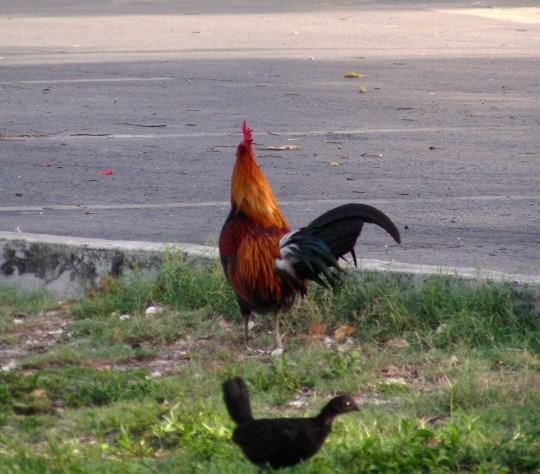




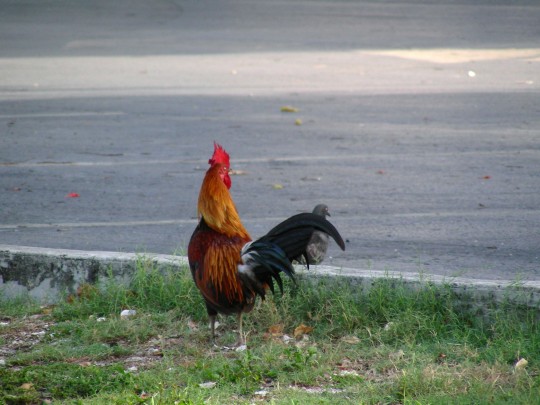



International Respect for Chickens Day
International Respect for Chickens Day exists “to celebrate chickens throughout the world and protest the bleakness of their lives in farming operations.” On the day, actions are to be done “to highlight the life and suffering of chickens and encourage compassion for them.” The day was started by the United Poultry Concerns in 2005. Karen Davis, the founder of the group, believes that chickens should be returned to an outside environment and that they shouldn’t be eaten. The idea for the day stemmed from Harry Shearer—the host of Le Show and Simpsons voice contributor—who had proclaimed May 14, 2000, as National Respect the Chicken Day. It was Mother’s Day, and he wanted to point out that hens are symbols of devoted motherhood.
Chickens are the most prevalent bird species; there are about 25 billion in the world. There are also dozens of breeds. The chicken is a subspecies of, and largely descended from, the red junglefowl, which is native to Asia. To a lesser extent, the chicken can also trace its lineage to the grey junglefowl. A baby chicken is a chick, young female chickens are pullets, female chickens old enough to lay eggs are hens, young male chickens are called cockerels, and full-grown male chickens are called cocks or roosters.
Chickens are likely domesticated more than any other fowl and are raised for both their meat and eggs. First domesticated in India and Southeast Asia, they were used in cockfights and for religious reasons, not for food. They began appearing on farms a few thousand years ago, but it wasn’t until the early twentieth century that they began being viewed differently, and eggs and meat became mass-produced commodities. High-volume poultry farms began appearing in Britain around 1920 and in America following World War II.
Hens and pullets are raised for meat and eggs. At first, eggs were the main focus, and only hens that couldn’t produce any more eggs were killed for food; now female chickens of any age are killed for meat. Males are used for breeding, but some young males—cockerels—are castrated (often chemically) and used for food; they are then known as capons. In the mid-twentieth century, meat surpassed eggs as the primary use of chickens. The meat industry has since continued to grow. Chicken meat is often used as pet food as well as for human consumption.
Chickens themselves are omnivores; they eat seeds, but also eat insects, lizards, and mice. When food is present, roosters may do some tidbitting: they make food calls and move their heads up and down while picking up and dropping pieces of the food. Research has shown that hens prefer roosters who do tidbitting more often. Groups of chickens create a social hierarchy. There is usually a dominant male, a few less-dominant males, and a few females. A pecking order is formed, and higher ranking males may strike out against lower ranking males, literally pecking them with their beaks. There is a pecking order with females as well.
Hens may mate with many different roosters. Interestingly, they may eject sperm and are more likely to do so if the rooster is lower on the pecking order. Chickens breed in the spring and summer months when the longer daylight hours stimulate egg-laying. Artificial lighting in chicken coops can influence hens to lay eggs year-round. The time between ovulation and egg-laying is between 23 and 26 hours, and chickens can ovulate an hour after laying an egg. So, it is possible for some hens to lay about 300 eggs a year. Chicks hatch about 21 days after eggs are laid. Free-range chickens may live up to six to eight years, while most chickens in the poultry industry only live two to three years—they lay eggs for a few years and are then slaughtered. The longest a chicken may live is about 30 years.
How to Observe
According to United Poultry Concerns, an “action” of compassion is to be done for chickens today. Posters, as well as brochures and handouts, can be acquired from United Poultry Concerns, and they suggest the following ideas on how to celebrate the day:
Hand out leaflets on a street corner.
Set up a table with information about chickens somewhere in public.
Have an office party dedicated to the topic.
Have a celebration of chickens in a classroom.
Write a letter to the editor of a local publication.
Call in to a radio program.
Host a vegan open house.
Talk to friends, family members, and strangers about what can be done to help chickens.
Some other ideas on how to celebrate the day could include:
Watch a documentary such as Food, Inc. or Dirty Birds: A Story of Chickens in America.
Watch Chicken Run.
Read about the different breeds of chickens.
Read a book about the chicken industry such as Big Chicken: The Incredible Story of How Antibiotics Created Modern Agriculture and Changed the Way the World Eats or Chicken: The Dangerous Transformation of America’s Favorite Food.
Read Prisoned Chickens Poisoned Eggs: An Inside Look at the Modern Poultry Industry, a book by Karen Davis, the founder of United Poultry Concerns.
Join United Poultry Concerns.
Source
#Brahma chicken#Key West Chicken#Kings Landing Historical Settlement#USA#Zoo Zürich#Zurich#Schweiz#Switzerland#Canada#travel#day trip#flora#fauna#bird#animals#Silkie#International Respect for Chickens Day#4 May#original photography#tourist attraction#InternationalRespectForChickensDay#outdoors#indoors#landmark#New Brunswick#Florida#vacation
2 notes
·
View notes
Text
"period appropriate" in this case is probably "did the breed even EXIST during this period?" and also "did the breed exist YET in this location during this time period?" and the answer in a lot of cases is no. Either the breed wasn't developed AT ALL until later, or it at least had not been imported from its native lands (SE asia/Oceana for red jungle fowl descendants or Chile for araucana descendants).
A lot of current-day common chicken breeds are VERY recent compared to human civilization. ISA Browns (common brown-egg layer) and Ameraucanas/EE (common blue-egg layer) were both developed as breeds in the 1970's. Europe and many other places outside of Chile only learned of the Araucana in the early 1900s. The barred rock, a common brown-egg layer, wasn't developed until the 1800s. You see this chicken in a movie from the 1700s or earlier?

historically inaccurate. Didn't exist. Maybe something LIKE it existed, but specifically the Barred Rock did not.
Chickens descended from one of four species of junglefowl.
Red junglefowl


Grey junglefowl


Sri Lankan junglefowl


and green jungle fowl


This INCLUDES araucanas, who were likely originally developed by the Mapuche people of the Araucanía region of Chile. The farther back in time you go, the more chickens would have looked closer to these four birds (and it's entirely possible these four have evolved since their original forms back in time, too, as humans began domesticating chickens thousands of years ago and that's a decent amount of time for ecological pressures to take effect).
Now what you might see are SIMILAR birds. For example, a brahma and a sussex hen look fairly similar - white birds with black around the neck/tail, red wattles/comb - but where as the Brahma was developed in the early to mid 1800s, the sussex has been around since at least the AD 40's. But here's a hen from each kind side by side, do you know which is which?


You MIGHT not really notice a difference at a glance. But they DO have different body builds, they have different comb shapes, and brahmas have feathered feed.
Same with barred rocks vs dominiques. Barred rocks from the 1800s, dominiques from the 1700s, here's one of each. Do you know which is which?


so to answer the question.... yes, period specific chickens exist and have existed for a very long time. New breeds continue to be developed. Things like the Prairie Bluebell, or the Green Queen, or Mystic Marans, usually "created" by hatcheries by slapping 2-3 breeds together so they can trademark a name. But there ARE still folks honestly looking to develop new breeds, and folks dedicated to preserving heritage breeds from hundreds or even thousands of years ago, to the point where an honest distinction in quality and bird can be made between a "heritage" chicken and a "hatchery" chicken of the "same" breed.
My favorite of the more recent breed delevopment projects that I am aware of is Rob Garren's purple chickens. The birds themselves are not Literally Purple, but he's been working on selecting for an increase in purple in the iridescence of their phenotype, which makes them shine purple

I've always been a sucker for purple things, what can I say.

This is.....niche. Do period-appropriate chickens even still exist? Idk anything about chickens. I like the fancy ones.
#chickens#honestly i'm not peeved by seeing period inaccurate chickens#but I DO think it's very funny to see something like#ISA browns running around in the 1800s and before#I don't really watch a lot of period pieces so *shrug emoji*#birds
86K notes
·
View notes
Text
TIGER KING 1 N 2
=
Indian RhinocerosES
BlackbuckS
Indian Grey MongoosES
Asiatic CheetaHS
Greater AdjutantS
Indian ElephanTS
Cattle EgretS
Lesser FlamingoS
ChinkaraS
Sambar Deer
Przewalski's HorseS
Red Junglefowl ROOSTERS
Nilgai BULLS
Indian LeopardS
Indian Roller SONG BIRDS
Bengal TigerS
Chital DEER
Wild Water BuffaloS
Lion-tailed Macaque MONKEYS
Grey Langur MONKEYS = VERVET MONKEYS
Small Five-Toed JerboaS = RATS
Naked Mole RatS
Arabian OstrichES
OrangutanS
Hexaprotodon sivalensis† HIPPOS [ RIVER ELEPHANTS ]
Saltwater CrocodileS
AardvarkS
MarkhorS
Striped HyenaS
Veiled Chameleon LIZARDS
Indian VultureS
Indian BoarS
[ FOUND IN INDIA ]

1 note
·
View note
Text

Grey Junglefowl (Gallus sonneratii), male, family Phasianidae, India
photograph by Rathika Ramasamy
164 notes
·
View notes
Text
Explore the Birdlife of Jim Corbett
Birdlife in Jim Corbett:
- Resident Birds: Jim Corbett is home to over 580 species of birds, including resident birds like the Indian peafowl, red junglefowl, and grey francolin.

- Migratory Birds: The park is also a popular stopover for migratory birds like the Siberian crane, greater spotted eagle, and black-necked stork.

- Waterbirds: The park's waterways are home to a wide range of waterbirds, including the darter, cormorant, and egrets.

- Raptors: Jim Corbett is home to a wide range of raptors, including the tawny eagle, Bonelli's eagle, and Oriental honey-buzzard.

Tips for Visiting Jim Corbett:
- Best Time to Visit: The best time to visit Jim Corbett is between November and June, when the weather is mild and wildlife is easily spotted.
- Safaris: The park offers several safari options, including jeep, elephant, and canter safaris. It's best to book your safari in advance to avoid disappointment.
- Guides: It's recommended to hire an experienced guide to help you spot wildlife and birds. The guides are knowledgeable and can help you make the most of your visit.
- Accommodation: The park offers several accommodation options, ranging from budget-friendly lodges to luxury resorts. It's best to book your accommodation in advance to avoid disappointment.
Conclusion:
Jim Corbett National Park is a must-visit destination for adventure enthusiasts and birdwatchers. The park offers a wide range of adventure activities and is home to over 580 species of birds, making it a paradise for nature lovers. Whether you're looking for a relaxing getaway or an action-packed adventure, Jim Corbett has something for everyone. So, pack your bags and get ready to explore one of India's most stunning national parks.
0 notes
Text

Yeah, like, look at this dude-

He's more colorful than a parrot and more ornamented that a pheasant, he's got spurs on his legs that he uses to fight rivals and predators -- it's everything that people would normally latch onto as a cool exotic animal, but we've become so used to their presence that we just don't register them as such anymore.
Also, I'm going to take this opportunity to plug the junglefowl, the chicken's wild ancestors, because they don't get enough recognition:




Top to bottom, left to right -- the red, Sri Lankan, grey, and green junglefowl.
Like, these are chickens -- chickens! -- that live wild in the jungle in India, southeast Asia, and Indonesia -- isn't that just the coolest thing?






the phenomenon where lesser known animals of more charismatic relatives are sometimes considered weirder despite looking more visually "tame" just because we've been so overexposed to the bonkers species. a naked mole rat should feel freakier to me than the furred lesser mole rat, but i've known naked mole rat my whole life so i don't question it.
1K notes
·
View notes
Text
6 Jaw-Dropping Wildlife Encounters You Can Only Have in Yala, Sri Lanka
Yala National Park, located in the southeastern region of Sri Lanka, is a wildlife lover's dream come true. Renowned for its diverse ecosystems and abundant wildlife, Yala offers visitors a chance to discover the wildlife and beauty of Yala National Park. From the elusive Sri Lankan leopard to the vibrant peacock, Yala is a treasure trove of natural wonders waiting to be explored. If you're passionate about wildlife, Yala should be at the top of your travel list. The park is home to an impressive array of species, many of which are endemic to Sri Lanka. Yala's rich biodiversity and the opportunity to witness rare and majestic creatures in their natural habitat make it a unique destination for any nature enthusiast.

The Majestic Sri Lankan Leopard
The Sri Lankan leopard is one of Yala's most famous residents. These magnificent big cats are notoriously difficult to spot due to their elusive nature and excellent camouflage. However, Yala boasts one of the highest leopard densities in the world, increasing your chances of a memorable encounter.
Best Time and Place to Spot Leopards
Leopards are most active during the early morning and late afternoon. Patience and a keen eye are essential, as these predators often rest in the shade during the heat of the day. The best areas to spot leopards in Yala are around Block 1 and Block 5, where they are frequently seen lounging on tree branches or prowling near waterholes.
Conservation Efforts
Conservationists are working tirelessly to protect the Sri Lankan leopard from habitat loss and poaching. Various initiatives, including habitat restoration and anti-poaching patrols, aim to ensure the survival of this iconic species for future generations.
The Mighty Asian Elephant
Asian elephants are another highlight of Yala National Park. These gentle giants can be seen in family groups, often near water sources where they come to drink and bathe. Watching a herd of elephants, especially the playful calves, is a heartwarming experience.
Elephant Behavior and Social Structure
Elephants are highly social animals with complex family structures. Matriarchs lead the herds, making crucial decisions for the group's safety and well-being. Observing their interactions provides fascinating insights into their communication and bonding.
Human-Elephant Interaction
Yala's rangers and guides are well-versed in managing human-elephant interactions to ensure safety for both visitors and elephants. It's important to maintain a respectful distance and avoid any actions that might stress or provoke these magnificent creatures.

The Sloth Bear: A Nocturnal Wonder
The sloth bear, with its shaggy coat and distinctive white V-shaped chest mark, is one of Yala's more unusual residents. Primarily nocturnal, these bears are known for their keen sense of smell and love for termites and honey.
Spotting the Sloth Bear
Spotting a sloth bear in the wild is a rare and thrilling experience. They are most active during the early morning and late evening. Look for them near termite mounds or foraging in the forest undergrowth.
Sloth Bear Conservation
Sloth bears face threats from habitat destruction and human-wildlife conflict. Conservation programs in Yala focus on habitat protection and educating local communities about the importance of coexistence with these unique animals.
The Colourful Birdlife of Yala
Peacocks are a common and spectacular sight in Yala. Their vibrant plumage and elaborate courtship displays are a visual feast for visitors. These birds are often seen strutting around open grasslands and forest edges.

Endemic Birds of Yala
Yala is a birdwatcher's paradise, home to numerous endemic species such as the Sri Lanka grey hornbill and the Sri Lanka junglefowl. The park's diverse habitats support a rich avian population, making it an ideal destination for bird enthusiasts.
Best Birdwatching Spots
The best birdwatching spots in Yala include the lagoons and waterholes, where a variety of waterbirds can be seen, and the dense forest areas, which are home to many rare and elusive species.
Crocodiles in Their Natural Habitat
Yala's water bodies are inhabited by the formidable mugger crocodile. These apex predators are often seen basking on riverbanks or gliding silently through the water. Their powerful jaws and stealthy nature make them a fascinating yet fearsome sight.
Crocodile Behaviour and Ecology
Mugger crocodiles play a crucial role in the ecosystem as top predators. They help maintain the balance of aquatic life by preying on fish, birds, and occasionally larger mammals that come to drink.
Safety Tips for Observing Crocodiles
While observing crocodiles, always maintain a safe distance and avoid getting too close to the water's edge. Follow the guidance of park rangers to ensure a safe and enjoyable experience.
Yala’s Unique Reptiles and Amphibians
Monitor lizards are frequently spotted in Yala, scuttling across open areas or sunning themselves on rocks. These agile reptiles are impressive hunters, feeding on insects, small mammals, and eggs.
Diverse Frog Species
Yala's wetlands are home to a variety of frog species, each contributing to the park's rich biodiversity. Their calls often fill the air during the rainy season, creating a vibrant symphony of nature.
The Importance of Reptile and Amphibian Conservation
Reptiles and amphibians play vital roles in Yala's ecosystems, from controlling insect populations to serving as prey for larger animals. Conservation efforts focus on preserving their habitats and mitigating the impact of human activities.
#srilanka #yala #travel #srilankatravel #travelphotography #travelsrilanka #srilankan #srilankadaily #nature #visitsrilanka #photography #ceylon #love #travelgram #instagood #ugaescapes
0 notes
Text
You see, armored fish have been laying eggs for half a billion slutty, slutty years. But chickens? Chickens? Gallus gallus domesticus? Those fuckers have only been around for 8,000 years. 'But what about junglefowl,' you cry. The red, green, grey, and Sri Lanken junglefowl diverged only 4-6 million years ago! They have nothing on eggs!
0 notes
Link
Songbird ReMix Chickens includes five of the most popular chicken breeds; the Rhode Island Red, the Orpington, the Leghorn, the Australorp and the Cochin. The domestic Chicken (Gallus gallus domesticus) was domesticated from the red junglefowl species found in Southeast Asia 8,000 years ago. They then were partially hybridized with other wild species of junglefowl such as the grey junglefowl, Ceylon junglefowl, and green junglefowl. Chickens have been domesticated for egg and meat production, although now, also for show and pets. The chicken base model in this set includes over 150 morphs and has the ability to create numerous chicken breeds, including 5 breeds listed above as well as the Ameraucana, Andalusian, Brahma, Delaware, Dominique, Jersey Giant, and Maran. As with all Songbird ReMix bird models, there’s a variety of easy-to-use controls and morphs in a central location which include complex movements such as folding wings automatically, spreading tailfeathers, and neck bending. This set comes with separate versions for DAZ Studio 4.2+ and Poser 10+ and supports Iray, 3Delight, Firefly and Superfly Render Engines. ------------------------------------------------ The following is included: Models (.cr2/.obj and .duf format)* SBRM Chicken Base Bird Species (.cr2/.obj and .duf formats with 4K main maps) Gamebirds (Order Galliformes):* Australop Chicken breed (M/F)* Cochin Chicken breed (M/F)* Leghorn Chicken breed (M/F)* Orpington Chicken breed (M/F)* Rhode Island Red breed (M/F) Poses (.pz2 and .duf format)* Default Reset Pose* Chicken Cock-a-Doodle-Do (male only)* Chicken Feed (female and male versions)* Chicken Nesting (female only)* Chicken Peck (female and male versions)* Chicken Perch (female and male versions)* Chicken Scratch (female and male versions)* Chicken Stand (female and male versions)* Chicken Strut (female and male versions)* A-Chicken Walk Cycle (animated; 45 frames)* 5 Partial Poses for Hen and Rooster Tail Shaping Field Guide and Manual in .PDF format (This manual includes how to use the product and detailed information about bird behavior, nesting and range). The set has two versions; a native DAZ Studio and a native Poser version. It supports Iray, 3Delight, Firefly and Superfly renderers. Read the Field Guide and Manual for detailed use instructions and rendering/posing tips. -------------------------------------- Software: Poser 10 / Poser Pro 2014 +, Daz Studio 4, Poser Pro 11, DAZ Studio 4 With IRAY, Poser 12, Poser 13 Coming soon: https://3d-stuff.net/ #daz3d #dazstudio #3drender #3dart #daz3dstudio #irayrender #3dartwork #blender #blenderrender #blenderart #noaiart #noaiwriting #noai https://3d-stuff.net/
0 notes